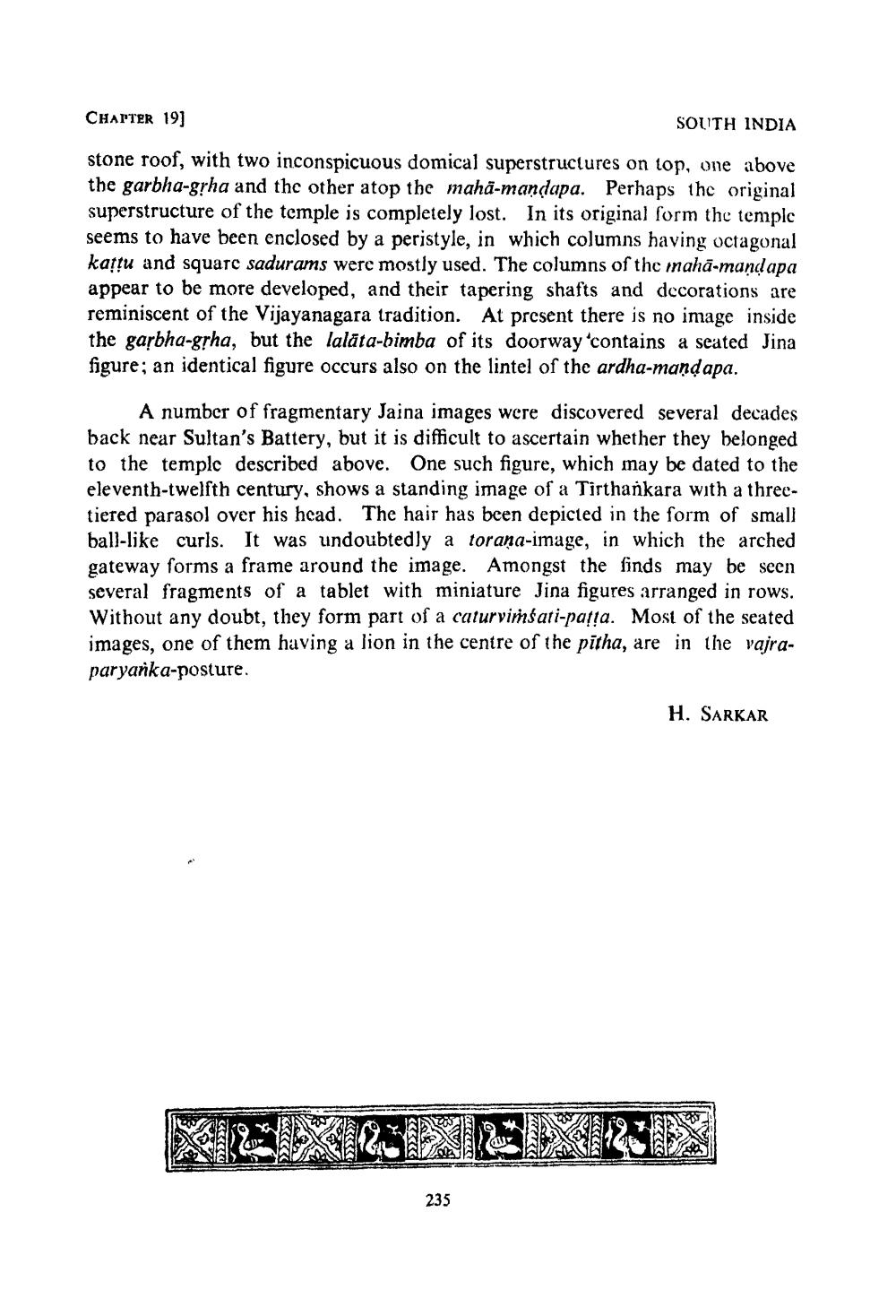________________
CHAPTER 19)
SOUTH INDIA
stone roof, with two inconspicuous domical superstructures on top, one above the garbha-grha and the other atop the maha-mandapa. Perhaps the original superstructure of the temple is completely lost. In its original form the temple seems to have been enclosed by a peristyle, in which columns having octagonal kafțu and squarc sadurams were mostly used. The columns of the mahā-mandapa appear to be more developed, and their tapering shafts and decorations are reminiscent of the Vijayanagara tradition. At present there is no image inside the garbha-gsha, but the lalāta-bimba of its doorway contains a seated Jina figure; an identical figure occurs also on the lintel of the ardha-mandapa.
A number of fragmentary Jaina images were discovered several decades back near Sultan's Battery, but it is difficult to ascertain whether they belonged to the temple described above. One such figure, which may be dated to the eleventh-twelfth century, shows a standing image of a Tirthankara with a threetiered parasol over his head. The hair has been depicted in the form of small ball-like curls. It was undoubtedly a torana-image, in which the arched gateway forms a frame around the image. Amongst the finds may be seen several fragments of a tablet with miniature Jina figures arranged in rows. Without any doubt, they form part of a caturvirśati-pasta. Most of the seated images, one of them having a lion in the centre of the pitha, are in the vajraparyanka-posture.
H. SARKAR
>>>>>>>
>>>>>>
<<US
>22
235




